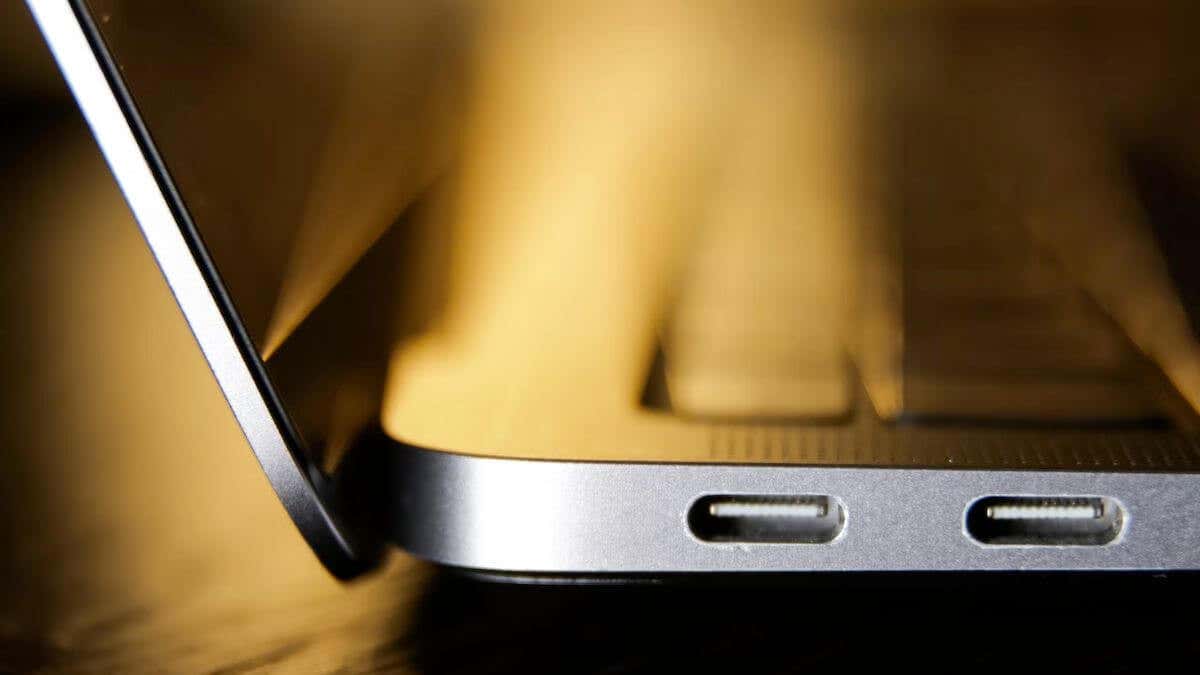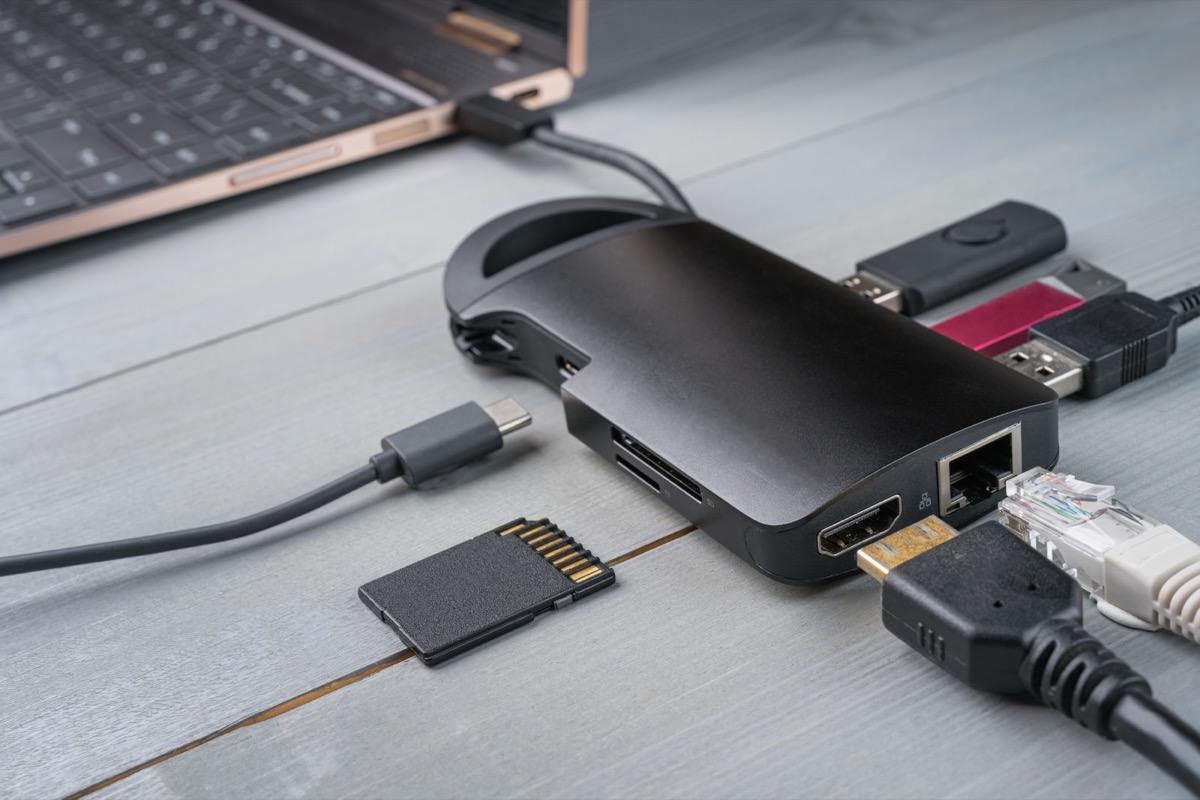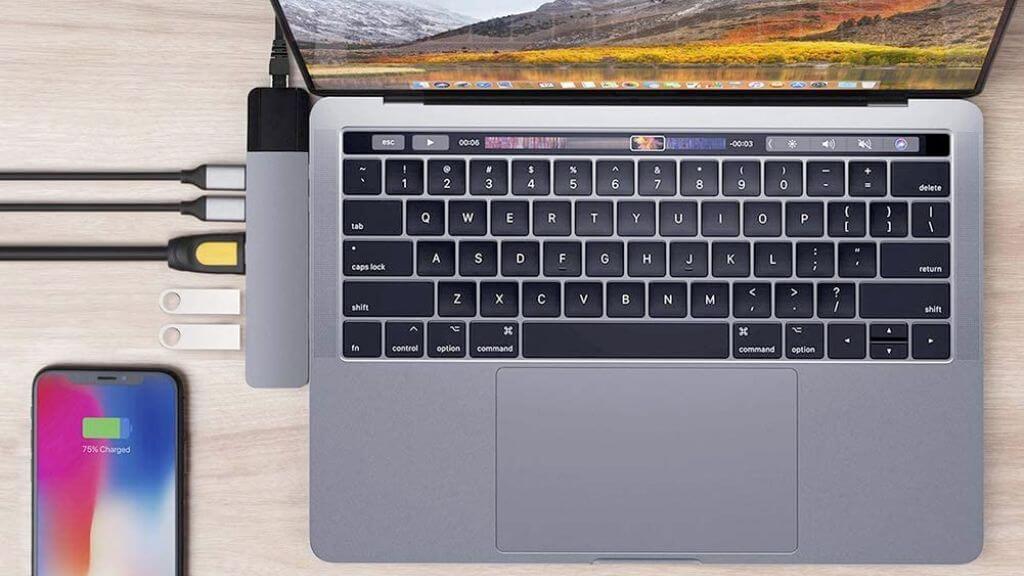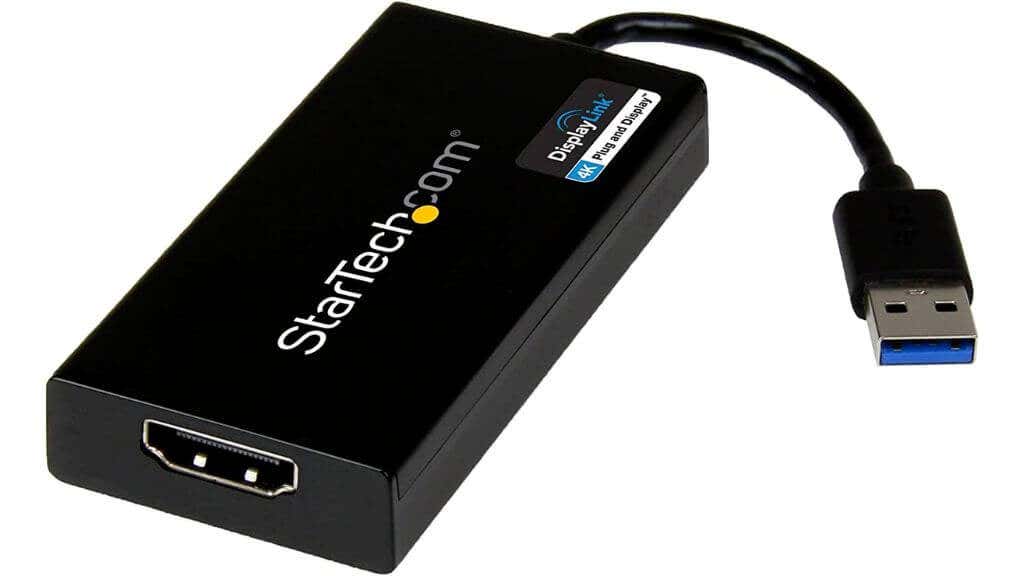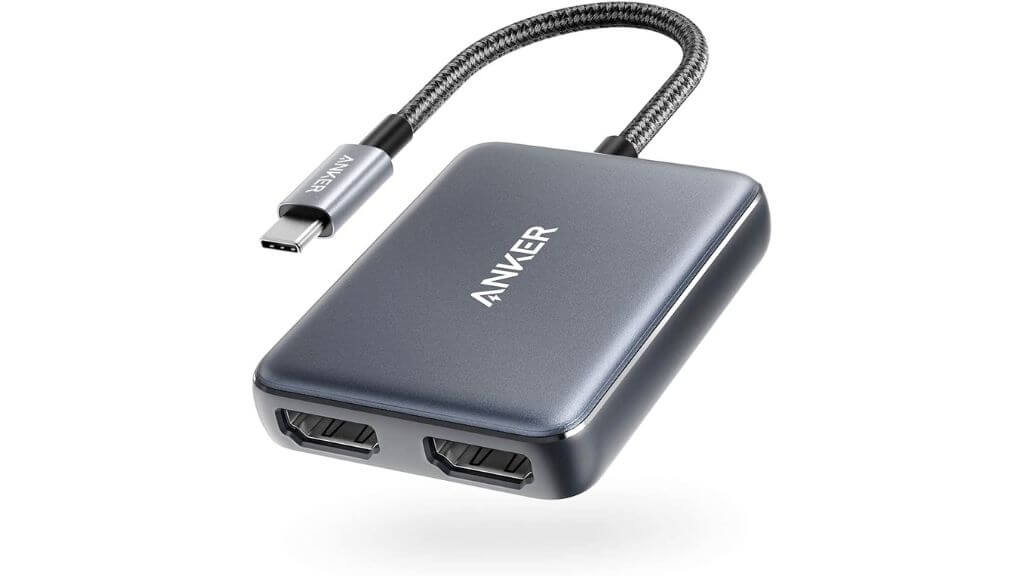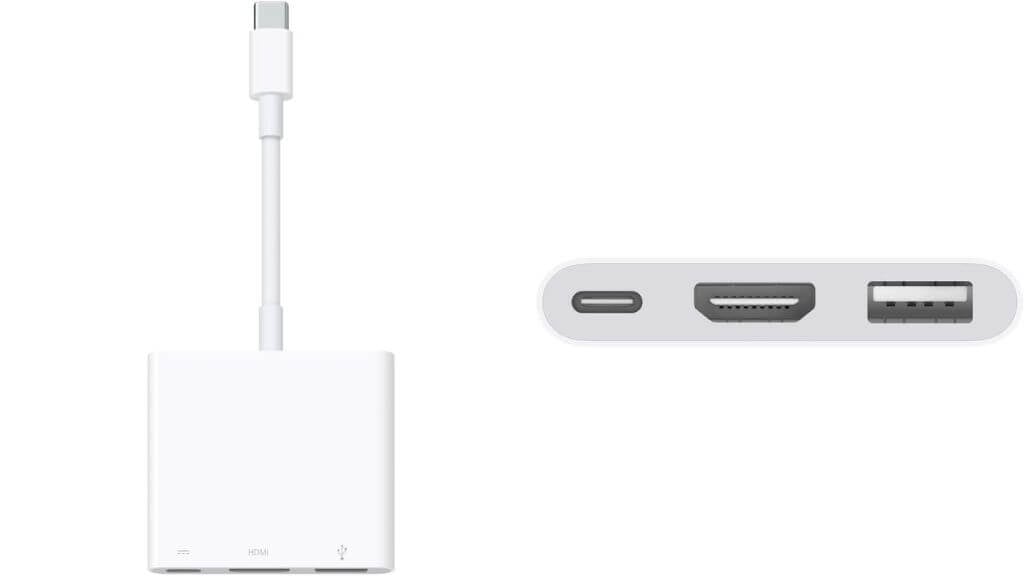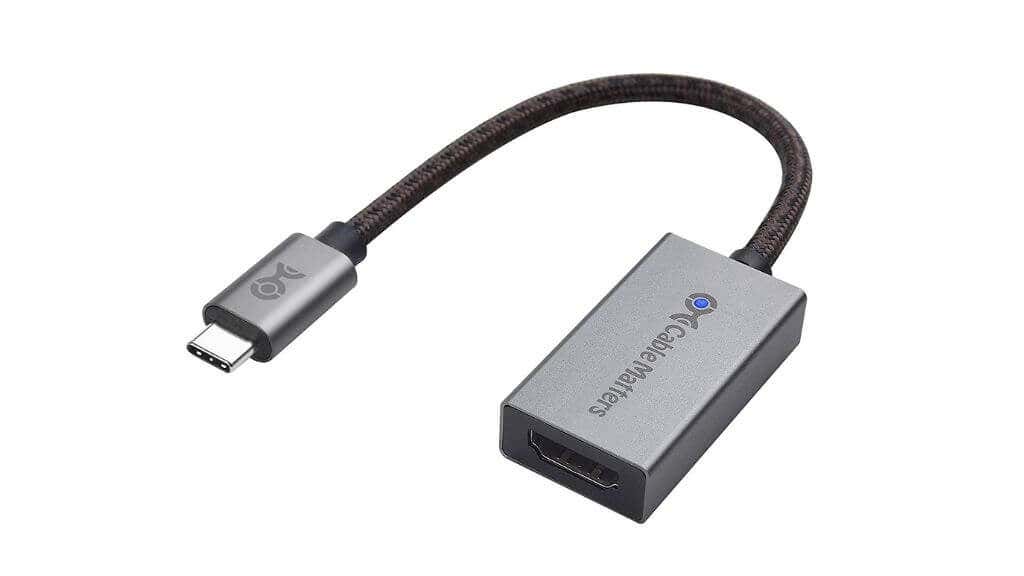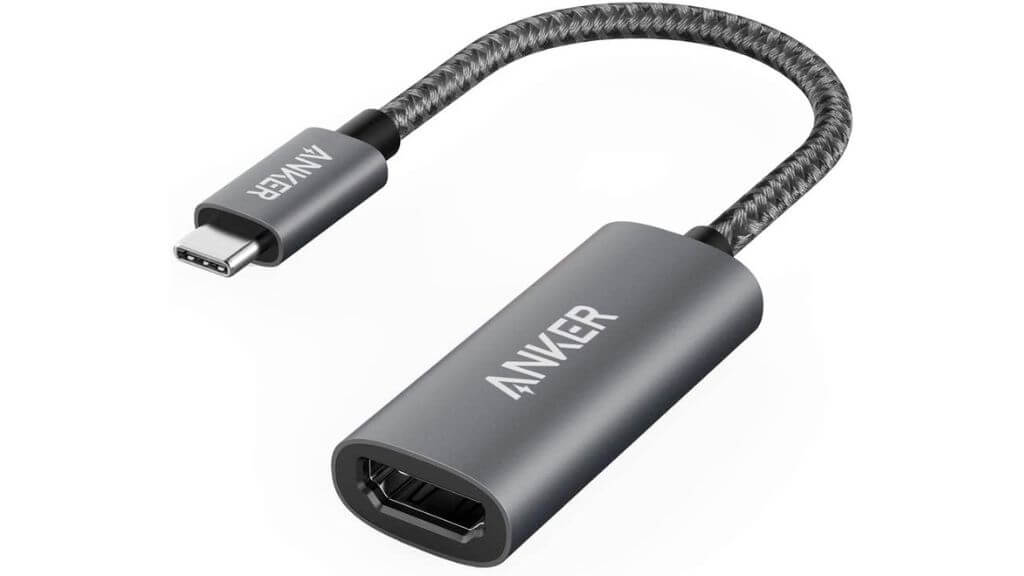HDMI (High Definition Multimedia Interface) ports are becoming a rarity on thin laptops, while USB-C or Thunderbolt ports that support HDMI and even DisplayPort are virtually ubiquitous. Not to mention, almost every (Android) smartphone and most new tablet computers sport these nifty USB ports.
This means it’s always a good idea to have at least one USB to HDMI adapter in your technology kit. Whether you want to use your phone to give a PowerPoint presentation or just want to watch some Netflix on a hotel TV, these cables have endless use cases. We’ve rounded up some of the best USB C adapters that offer great value, quality, and compatibility.
What to Look for in a USB to HDMI Adapter
Consider the maximum video resolution supported by the adapter and make sure it matches the resolution of your HDTV or monitor. Many adapters only support 4K resolution at 30Hz, for example, when most 4K displays can run at 60Hz or more these days. If you’re running a lower resolution, check whether the adapter can hit at least 60Hz at that resolution. Remember that the HDMI cable in question also needs to support 4K 60Hz!
Some adapters may come with additional features such as built-in USB hubs, extra ports, and software that allows you to adjust display settings. You can also get adapters supporting legacy connections such as VGA and DVI. Consider if these features are important to you and if they are included in the adapter you are considering.
Be careful when it comes to the exact USB standard an adapter uses. Today’s most popular type of adapter is a USB-C to HDMI converter, but Thunderbolt adapters use the same physical connector as USB-C devices. In most cases adapters that support Thunderbolt 3 or 4 will also work with USB-C (at a slower total speed), but some adapters only work with Thunderbolt.
We’ve also found that you may have more compatibility issues if you’re not using a Windows or Mac computer. We haven’t taken compatibility with Linux systems or Chromebooks into account here, although smartphones and tablets are considered thanks to their popularity.
Lastly, although these adapters are solid-state devices, we’ve found that they have a strange tendency to wear out, so picking one with a reasonable warranty isn’t a bad idea.
Best All-In-One Mac Solution: HyperDrive Dual USB Type C Hub Adapter for MacBook Pro
If you have a compatible MacBook, the HyperDrive Dual USB-C hub adapter is possibly the most elegant way to add HDMI and a whole host of other connections to your thin and light computer.
The adapter uses both Thunderbolt ports to work, so it won’t fit on MacBooks that only have one port rather than two. Double-check that your laptop is compatible before you buy this product! In a pinch, you can use two female-to-male USB-C extenders to connect this adapter to any laptop with two USB-C ports, but that’s a rather inelegant solution.
Apart from support of up to 5K at 60Hz, you’ll also get Gigabit Ethernet, two USB-A 3.0 ports, USB-C 40Gbps, and USB-C PD (Power Delivery) for fast charging from a suitable power supply.
This is the perfect accessory to use at your desk as an elegant docking station, or you can take it with you in your laptop sleeve pouch and make sure you’re ready to hook up to anything without carrying multiple dongles or converters around. Since this adapter sits tight to the body of your MacBook, it’s the best-looking solution too!
Unfortunately, this model doesn’t have an SD or TF card reader, so if you’re the creative type and need those card reader functions, you’ll have to look elsewhere.
Best Solution for Older Computers: StarTech.com USB 3.0 to HDMI Adapter
Most of the USB to HDMI adapters you’ll come across these days use a USB-C port, but plenty of computers currently in use don’t have this newer port type. Now, you can buy a USB C to A converter on sites like Amazon, but many don’t support video output or otherwise result in compatibility issues. Believe us, we’ve tried a lot of them.
A sure bet is buying a native USB Type A to HDMI adapter such as this great little unit from StarTech. This uses DisplayLink technology, which is a software-based solution. Therefore it’s not a great way to use applications such as video games, but if you want to connect to a 4K UHD screen to watch movies, do a presentation, or general productivity, this is an excellent solution.
Best of all, since it’s a separate software solution, it doesn’t matter if your computer’s graphics card supports 4K output! It also means you don’t need a special USB port certified for a video signal. Any USB type A 3.0 port will work on both Mac and Windows.
Best Productivity Solution: Anker USB C to Dual HDMI Port Adapter
There are many reasons why you might want to connect two monitors and run them as separate extended displays. You can turn your laptop into a productivity beast when you sit at your desk, drive a monitor and projector simultaneously for a presentation, or use it as a splitter and mirror two displays to show the same video to two groups of people.
Anker’s USB C Dual HDMI adapter relies on the DisplayPort over USB-C protocol, which most modern laptops and computers should support. It’s always a good idea to check your computer’s specifications to ensure you have DisplayPort on the USB-C port you want to use.
The adapter’s capabilities vary depending on what version of the DisplayPort protocol your computer supports. If you have a DP1.2 port, then you’ll have at most 4K 30Hz using dual monitors. At least, that’s the case in Microsoft Windows. On macOS, you’ll get 4K 60Hz regardless of your specs, according to Anker’s documentation. It’s also nice to know that this adapter works with iPad Pro and Air devices with a USB-C port, although you can only drive a single secondary display this way.
Best Apple Compatibility: Apple USB-C Digital AV Multiport Adapter
Apple’s move to USB-C and Thunderbolt on its computers and some iPads is a welcome change. It opens up a world of accessories not limited to the “MFi” program that any accessory with a Lightning plug must pay to join.
Sadly, although USB-C is a solid standard, enforcement of it isn’t always great. While any device that’s “MFi certified” is guaranteed to work with an Apple gadget using Lightning technology, the same can’t be said for USB. We have a small pile of USB C dongles to prove it. Ones that work just fine with a Windows PC or Android phone have all sorts of weird bugs when hooked up to Apple gear.
This is a roundabout way of saying that if you have a Mac or a USB-C iPad, it’s a good idea to buy this official multiport adapter from Apple directly. It lets you plug in a charger, hook up a screen, and connect one USB device. If that one USB device is a small USB hub, you’re essentially set, although with the popularity of wireless keyboards and mice these days, most people probably only need one USB port anyway.
This adapter supports 4K Ultra HD at 60Hz, as long as you have a device that can handle it. You can check the full list yourself, but recent devices such as the iPad Pro 12.9” 3rd generation or most Macs from 2017 or later fall into this category. Otherwise, you’ll be capped at 30Hz unless you drop down to 1080p.
Best for Future-Proofing: Cable Matters 48Gbps USB C to HDMI 2.1 Display Adapter
It can be surprisingly hard to find a USB to HDMI adapter that supports 4K at 60Hz, especially at a reasonable price. We’ve bought several cheap adapters only to find that we’re limited to 30Hz at higher resolutions or that we can’t hit the maximum refresh rate on certain 1080p or 1440p monitors.
Then along comes Cable Matters with this affordable high-speed adapter that supports HDMI 2.1 as opposed to the more common HDMI 2.0. HDMI 2.1 is a standard that’s capable of 8K 30Hz HDR output and 120Hz 4K! This adapter works with USB-C and Thunderbolt 3 and 4 ports. It supports the best color bit depth, even at 8K, so you’ll get the best picture quality your computer can muster.
Unfortunately, Macs are currently limited to 4K at 60Hz, but this adapter offers a lot of future-proofing for a price we frankly can’t believe. Best of all, by all accounts, it’s built to last as well. If it weren’t for the small sacrifice on Mac, this would be the best all-round solution you can buy right now for the money.
Best for Portability: Anker 310 USB-C to HDMI Adapter
While the Cable Matters adapter above is an absolute steal at the price, if all you need is 4K at 60Hz, Anker has you covered at half the price. The 310 is a slick high-quality aluminum adapter that lets you connect your Mac, iPad Pro, Samsung Galaxy, and many more devices to any HDMI display at up to 4K60.
Apart from being a mini marvel, this plug-and-play solution will play ball with any USB-C port that supports DP Alt Mode. That’s the DisplayPort over USB-C feature we mentioned earlier. That does, of course, mean that the actual maximum resolution and refresh rate depends on the source device’s capabilities.
Don’t Forget About the Alternatives
While everyone should probably have one of these adapters somewhere in case of emergency at least, it’s important to remember that using a physical connection isn’t the only way to connect to a display.
Many modern smart TVs, for example, will accept MiraCast, Apple AirPlay, or casting using a built-in Google Chromecast over Wi-Fi. As long as you don’t need pin-sharp latency or ultimate picture quality, simply tapping a cast button might be the fastest and most convenient way to access another display.
